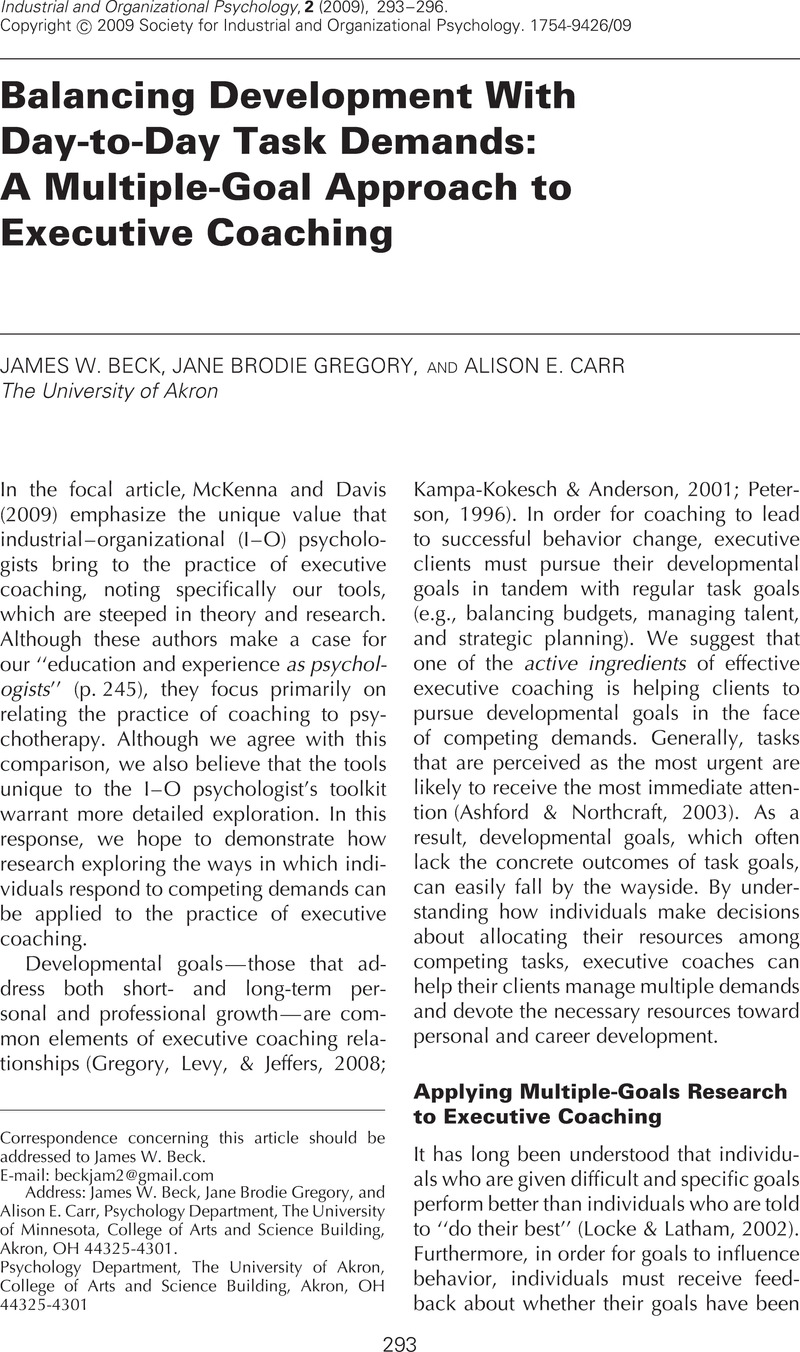Crossref Citations
This article has been cited by the following publications. This list is generated based on data provided by Crossref.
McKenna, D. Douglas
and
Davis, Sandra L.
2009.
What Is the Active Ingredients Equation for Success in Executive Coaching?.
Industrial and Organizational Psychology,
Vol. 2,
Issue. 3,
p.
297.
Schmidt, Aaron M.
Beck, James W.
and
Gillespie, Jennifer Z.
2012.
Handbook of Psychology, Second Edition.
Ford, Robert C.
and
Dickson, Duncan R.
2012.
Enhancing customer self-efficacy in co-producing service experiences.
Business Horizons,
Vol. 55,
Issue. 2,
p.
179.
von Humboldt, Sofia
Leal, Isabel
Laneiro, Tito
and
Tavares, Patrícia
2013.
Examining Occupational Stress, Sources of Stress and Stress Management Strategies through the Eyes of Management Consultants: A Multiple Correspondence Analysis for Latent Constructs.
Stress and Health,
Vol. 29,
Issue. 5,
p.
410.
Unsworth, Kerrie L.
Dmitrieva, Alina
and
Adriasola, Elisa
2013.
Changing behaviour: Increasing the effectiveness of workplace interventions in creating pro‐environmental behaviour change.
Journal of Organizational Behavior,
Vol. 34,
Issue. 2,
p.
211.
2015.
The Value of Executive Coaching.
p.
13.



